Chinese Buddha in KL
Just a quick posting of a Buddha image snapped in a small Chinese temple tucked away down a side street in downtown Kuala Lumpur.
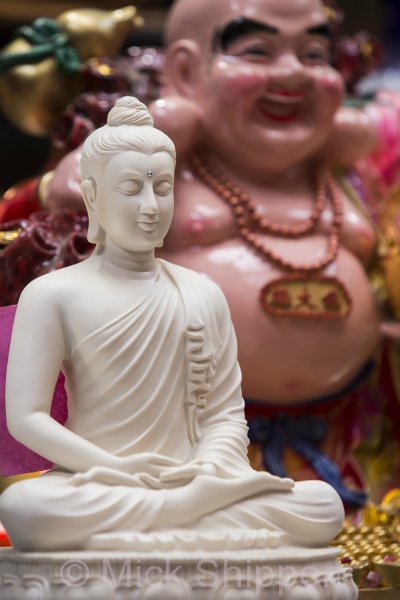
travel photographer & writer
Just a quick posting of a Buddha image snapped in a small Chinese temple tucked away down a side street in downtown Kuala Lumpur.

I’ve just returned from another trip to Myanmar. Travel within the country is pretty demanding as the infrastructure has suffered from many years of neglect, but the rewards for travelling here are great. If I could only travel to one country over the next decade it would be Myanmar. At every turn there is another fabulous photo opportunity.
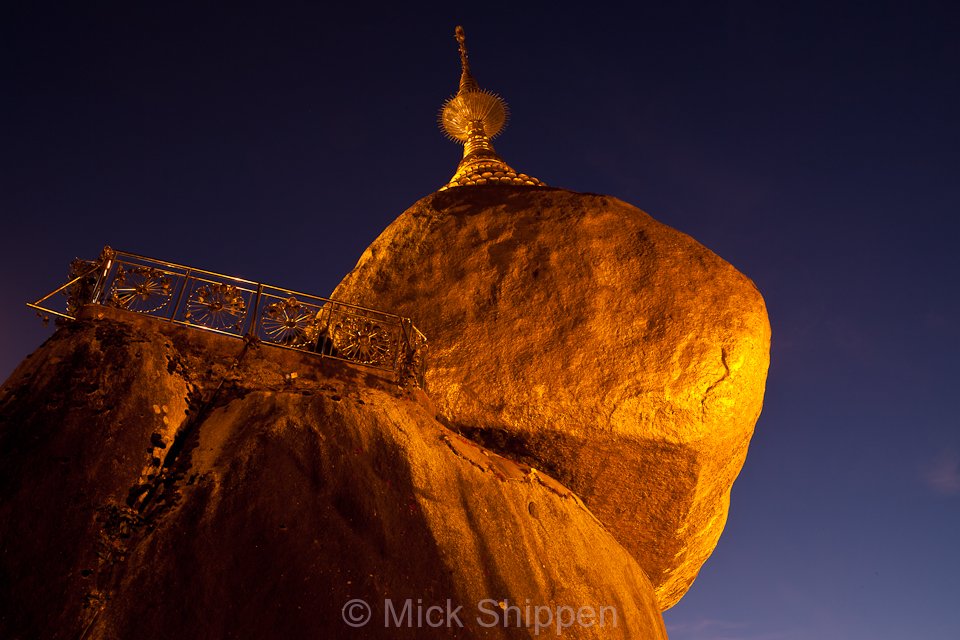
Over the next few days I’ll be posting images from several destinations, starting with the magnificent Golden Rock. Also known as Kyaik-htiyo, the Golden Rock is one of Myanmar’s most sacred Buddhist sites.
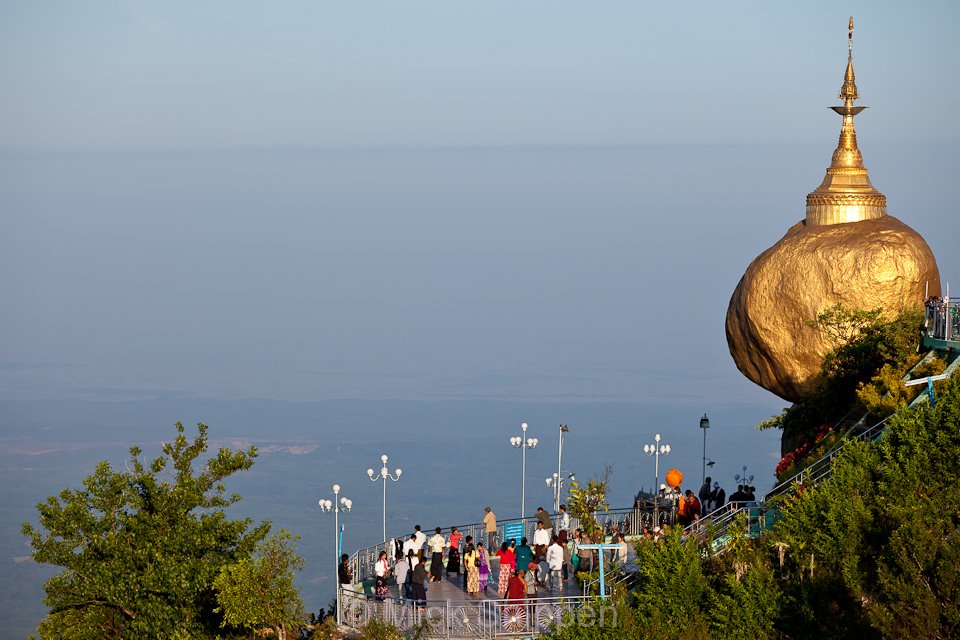
Located around three hours drive east of Yangon, it is a place of pilgrimage for Buddhists from all over Asia who come to pray and rub gold leaf on the precariously perched rock.
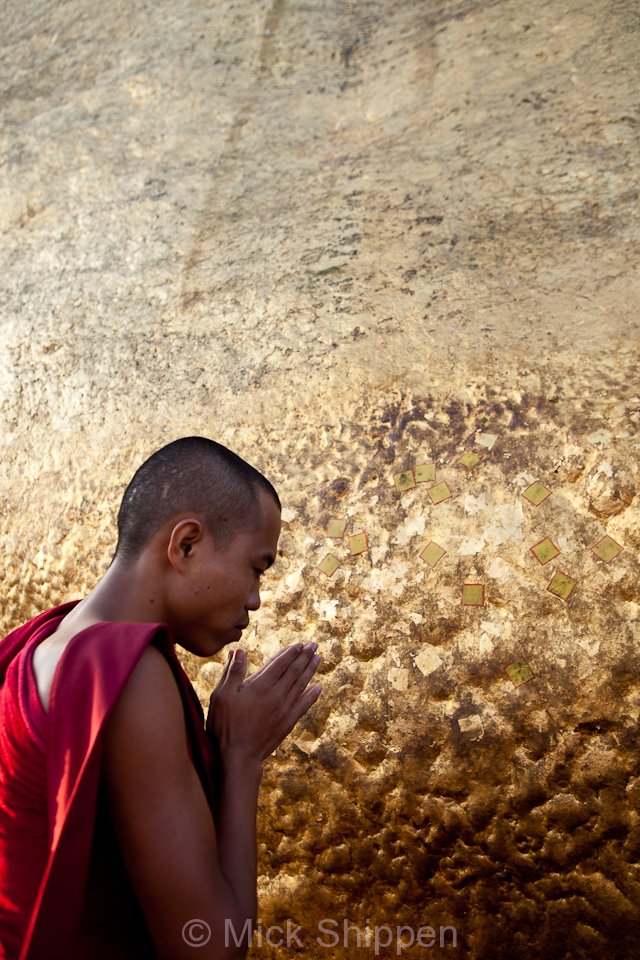
As with many sites of pilgrimage, getting there requires effort. A nail-biting truck ride takes you halfway up the mountain, and the rest of the steep climb is done on foot. If you want to experience both sunset and sunrise, make sure you stay at the hotels at the top – just a 10 minute walk from the actual site.
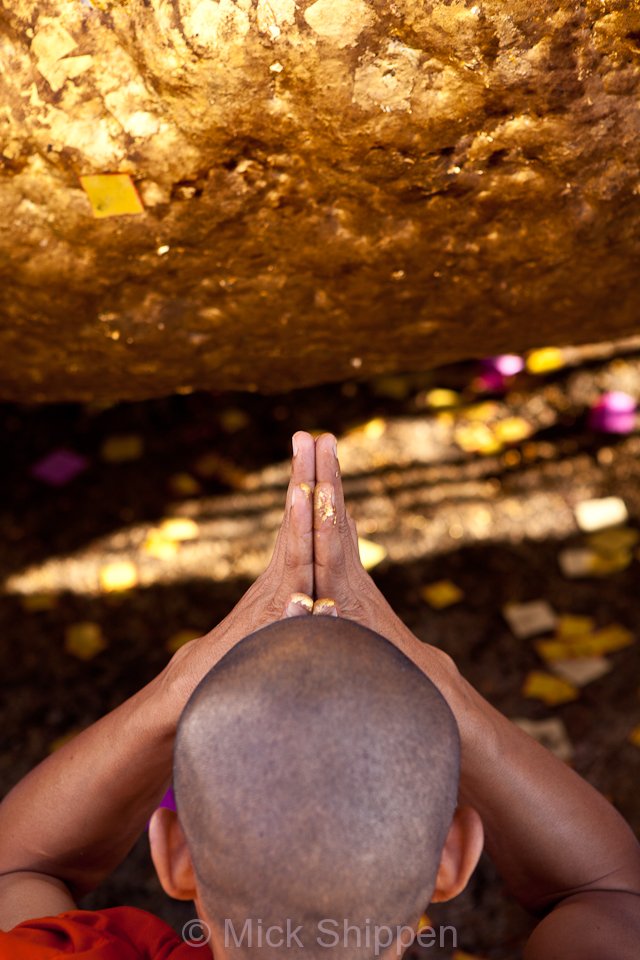
A stone’s throw from Mandalay’s stone carving district is a street lined with foundries casting bronze Buddha images. Using a process that dates back thousands of years, skilled craftsmen create detailed wax images of Buddhas which are encased in earthenware clay. The mould is then heated to burn out the wax and the bronze poured in. Foundries in Mandalay are renowned for producing high quality bronzes that are commissioned for temples all over the country.
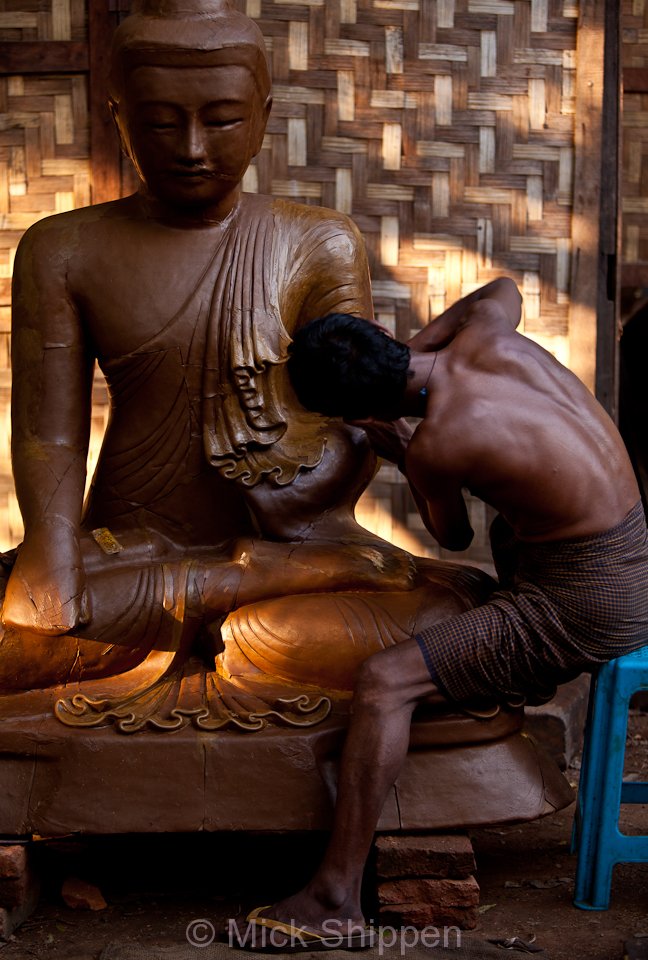
Here a sculptor at a workshop in Mandalay is working on a large wax image.
I’ve just returned from a week-long trip to Myanmar and the city of Mandalay to take photographs for my current book commission. Mandalay is to Myanmar what Chiang Mai is to Thailand – the centre of the country’s arts and crafts industry. Weaving, bronze casting, stone carving and much more can all be found here.
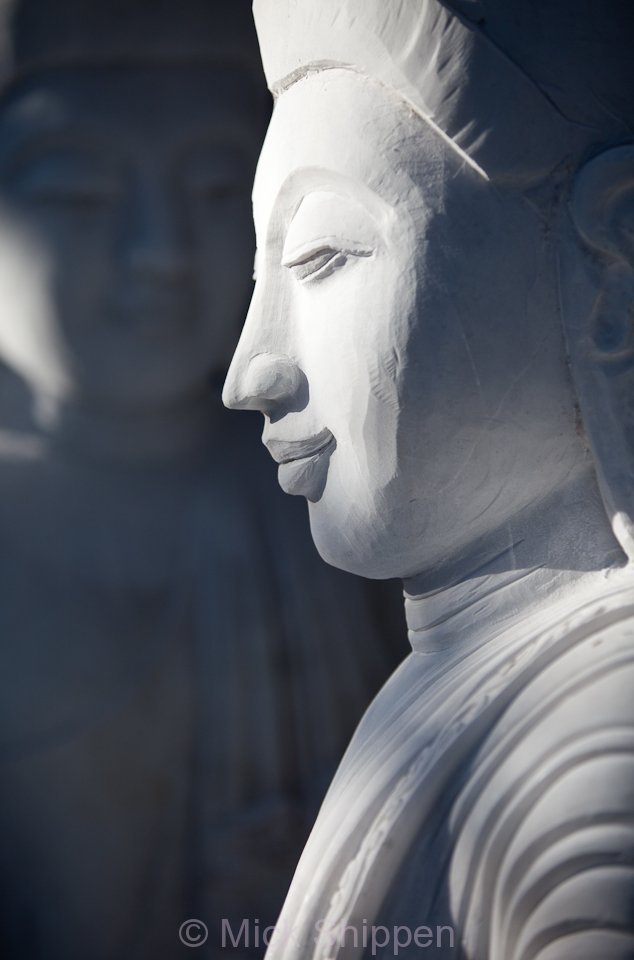
As with most arts in Myanmar the focus of the stone carvers is religious. In one part of town the streets are lined with the workshops of skilled craftsmen who attack pure white marble with angle grinders and drills to create the most enigmatic Buddha images.
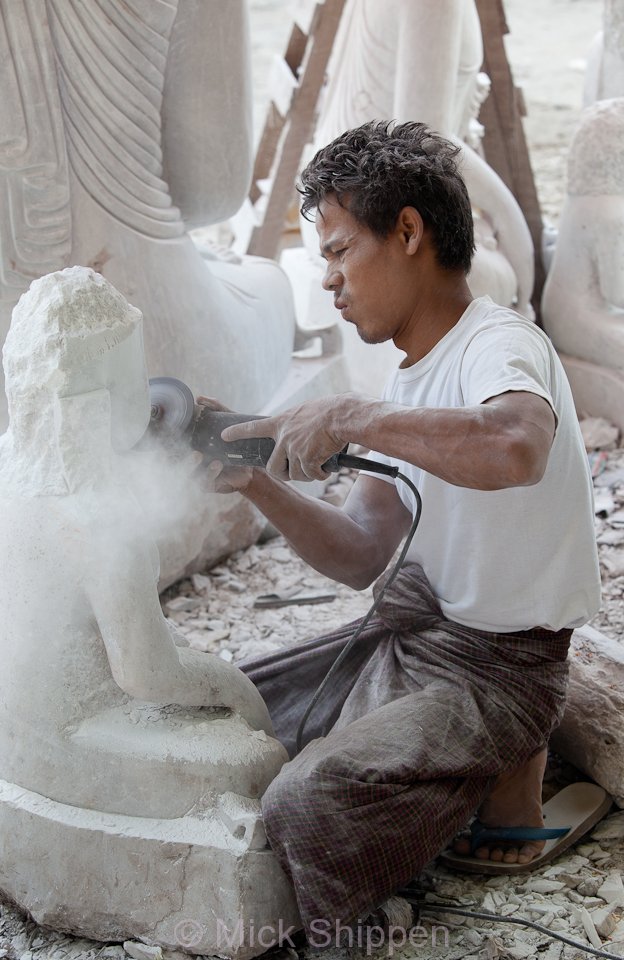
Carvings of all sizes, from the smallest keepsake to monumental three-metre high statues, can be seen in all stages of production.
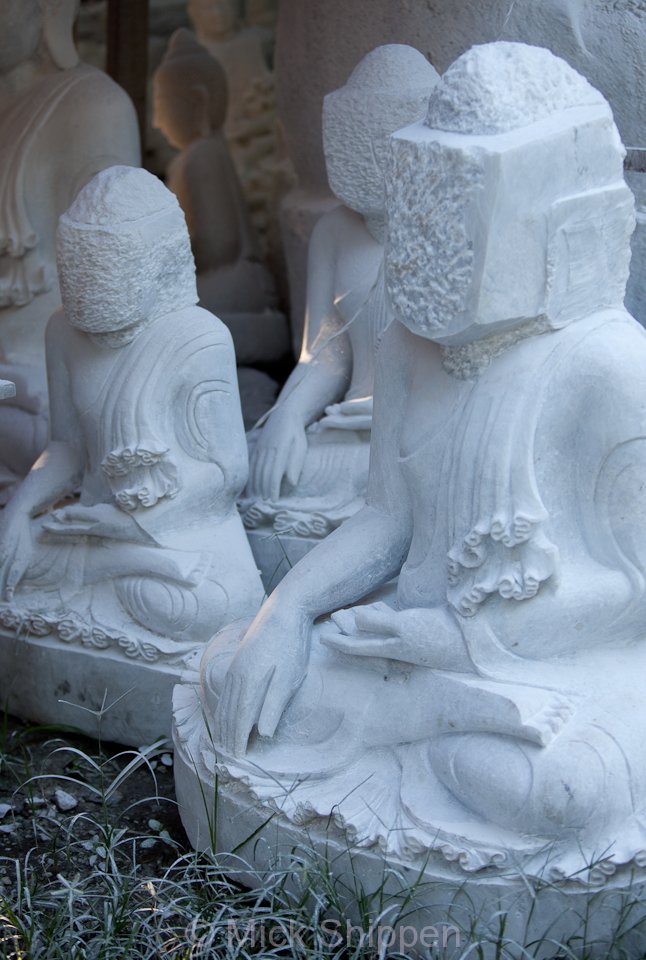
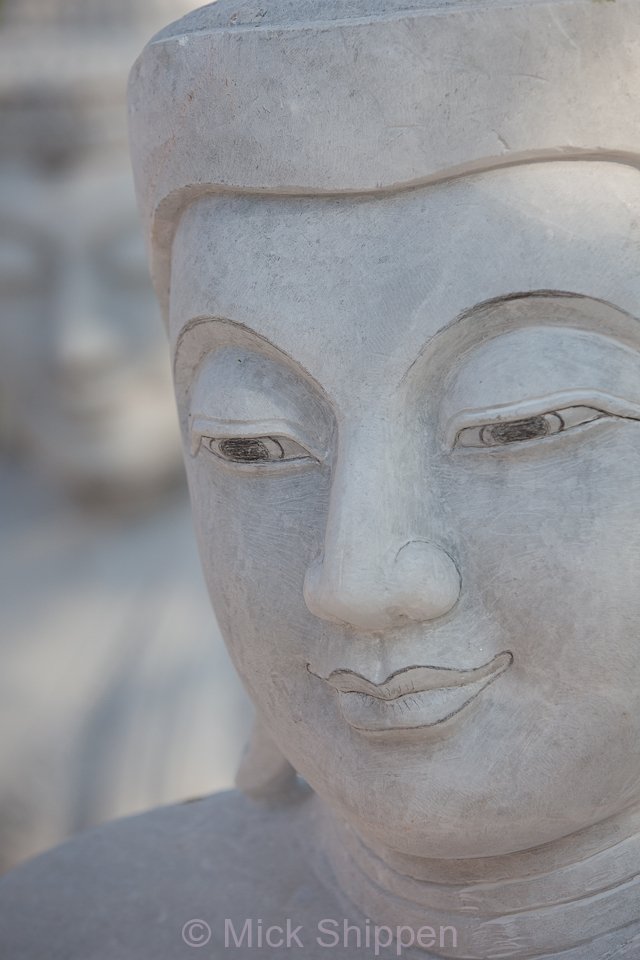
It’s a fascinating area to explore, especially in the early morning when monks and nuns walk the streets collecting alms.
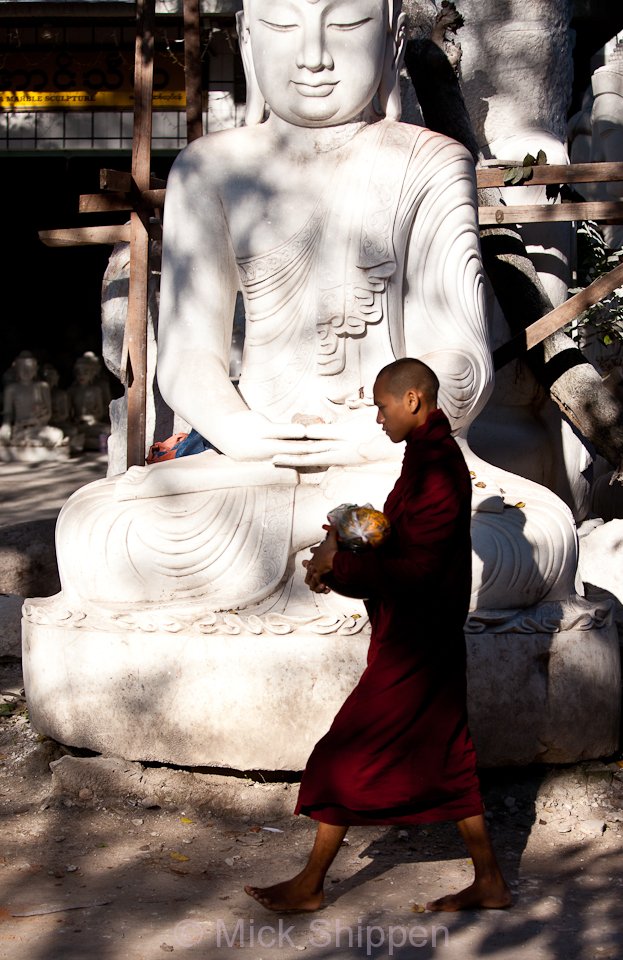
I have just returned from a long weekend in the town of Ayutthaya, one of the most culturally and historically interesting towns within easy reach of Bangkok. Thailand’s former capital is a must on any travel itinerary.
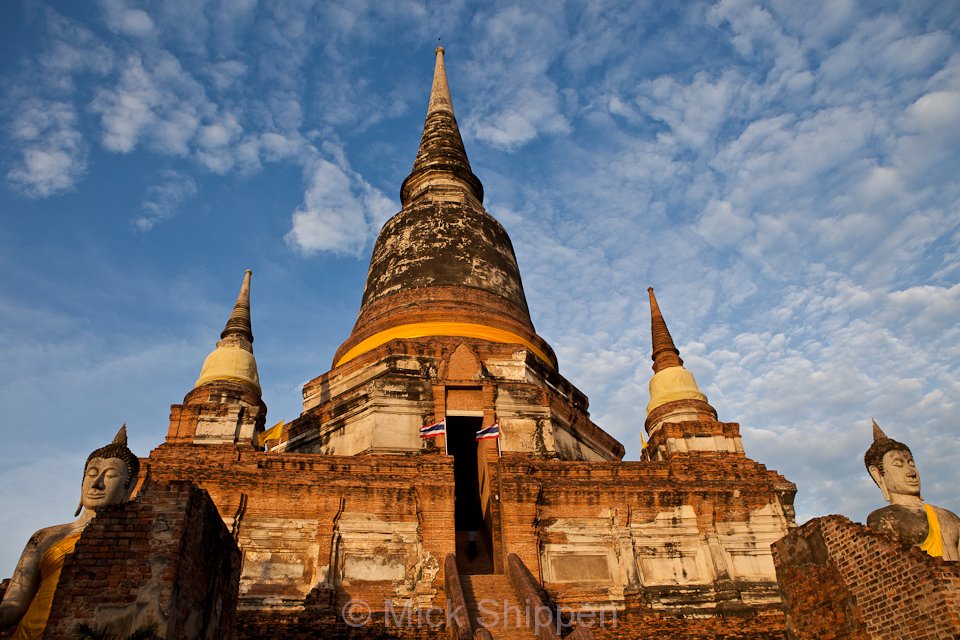
Once praised by foreign emissaries as the finest town they had ever seen (at least according to Tourist Authority of Thailand it was), today many of the ancient ruins have now been encroached upon by the new town resulting in a typically ramshackle Thai approach to preservation. Indeed the site was given UNESCO World Heritage status but I heard that this may be at risk due to the over commercialization of areas within the park with souvenir stalls and so on. The town certainly does get overrun with foreign and local tourists eager to buy the tat on offer but I see no reason way it can’t be kept away from the temple sites. But this is Thailand after all – the land that never let heritage get in the way of making money…
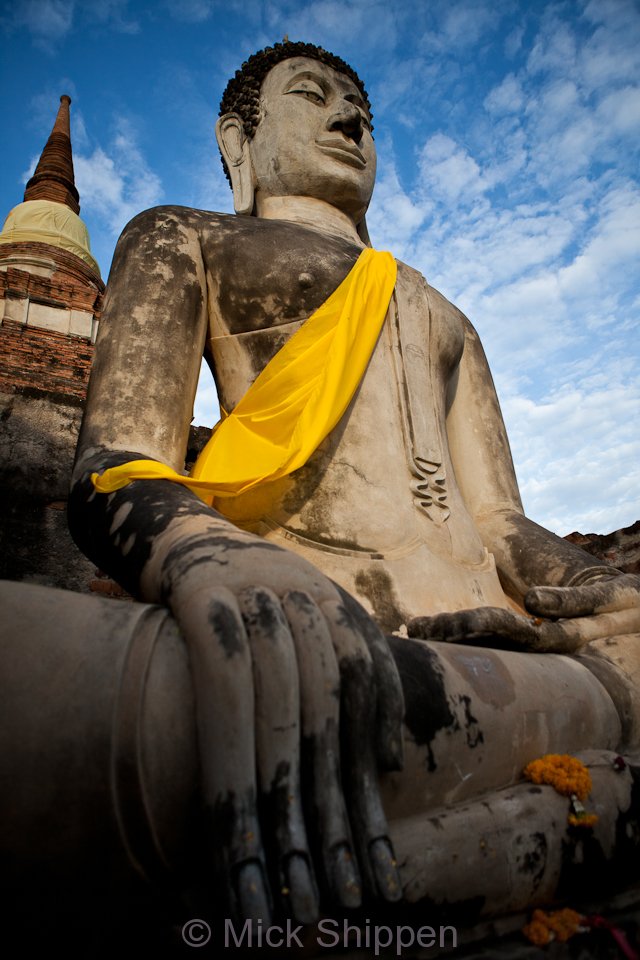
Ayutthaya was founded in 1350 by King U-Thong. During the 14th and 15th centuries the Thai kings of Ayutthaya had built the town with three palaces and over 400 temples. By the mid-16th century Ayutthaya was sacked by an invading Burmese army and, along with Lanna in north Thailand, came under their control.
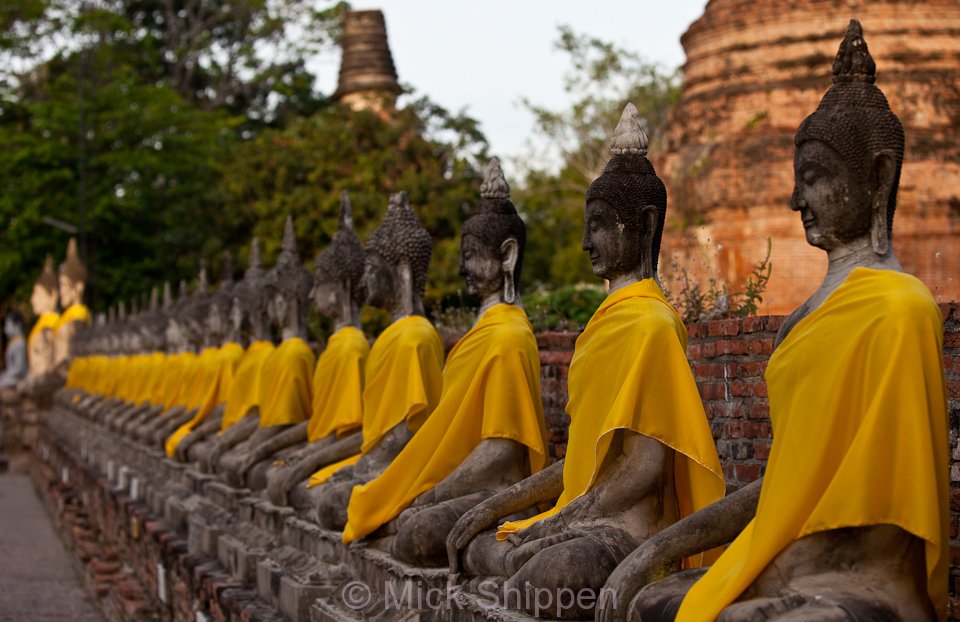
Although Thais regained control of both areas by the end of the century, the Burmese invaded Ayutthaya again in 1767, fighting and winning a fierce two-year battle. Many of the temples were destroyed.
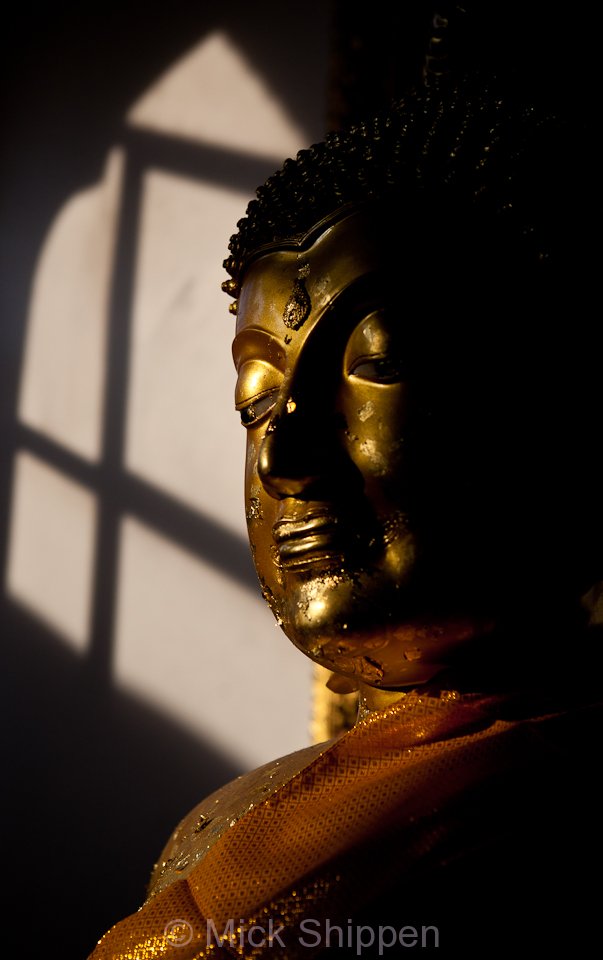
Situated approximately 86 kilometres from Bangkok, Ayutthaya can be reached by car in little over an hour, by train in 90 minutes (in theory at least. My trip on the way there took three hours), and by river.
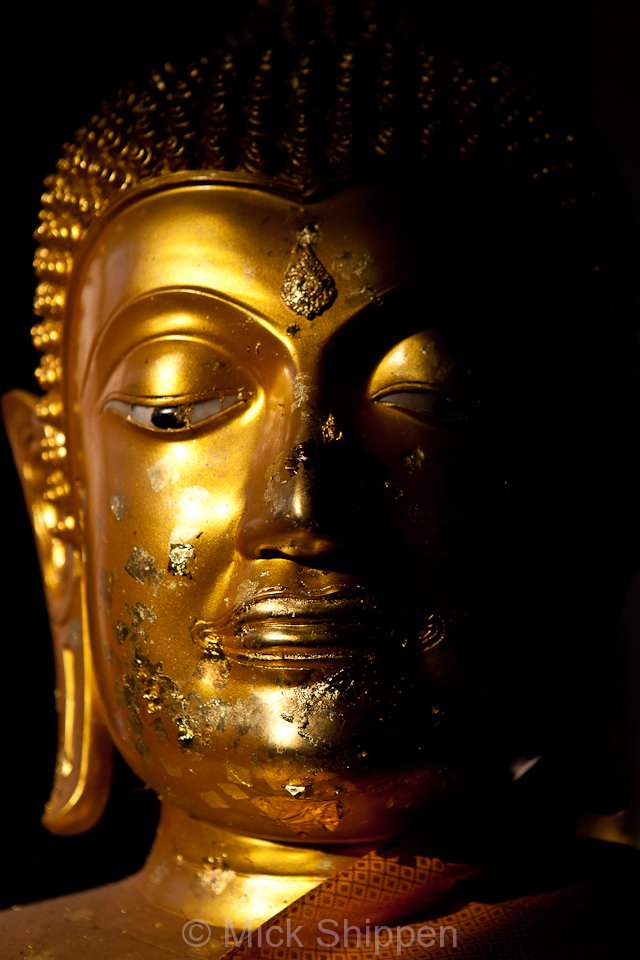
You can see a few more images from Ayutthaya in the Thailand gallery.